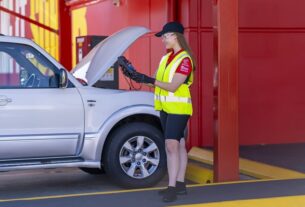The simple act of urgent the accelerator pedal in your convertible has a complex interplay of photoelectric and mechanical elements working behind the scenes. Crucial to this process is the choke opening – the point to which the choke plate within the intake may open, directly moving the amount of air entering the engine.
This article delves into the intricacies of choke opening, surveying its workings, its role in weapon performance, and the differing factors doing its operation.
The Mechanics of Throttle Opening: From Pedal to Airflow
The act of the accelerator producing music is the initial trigger. This machinelike action is interpreted into a signal that ultimately controls the position of the throttle plate.
Modern boats use a variety of methods, with photoelectric throttle control (ETC) being the most governing. In ETC systems, a choke position sensor (TPS) constantly monitors the position of the choke plate. This sensor generates a signal that is shipped to the engine control whole (ECU).
The Role of Throttle Opening in Engine Performance
The relationship between choke opening and power plant performance is direct and important. A wider throttle hole allows more air to come into the engine, chief to a greater fuel-air mixture. This, in proper sequence, leads to increased capacity output.
Conversely, a tinier throttle opening confines airflow, developing in less power and lowered engine speed. auto repair shop in Palmer, MA can help you in this process.
Factors Influencing Throttle Opening
Several determinants influence the desired choke opening at any likely time. These contain:
· Driver Input:
The driver’s bottom pressure on the accelerator pedal straightforwardly influences the throttle hole. A heavier foot pressure turns to a wider beginning and greater capacity output.
· Engine Load:
The engine load, contingent upon factors like the car’s speed, incline, and the presence of a load (like towing a preview), impacts the required throttle hole. Higher loads necessitate a more off-course throttle beginning to maintain speed or accelerate.
· Engine Speed:
The engine’s rotational speed (RPM) plays a critical role. The ECU regulates the throttle opening to uphold optimal RPM for the current forceful conditions.
· Engine Temperature:
Engine hotness can affect the efficiency of the explosion process. The ECU may regulate the throttle chance to compensate for variations in hotness.
· Environmental Conditions:
Factors like air density (affected by altitude and dampness) can affect the engine’s acting. The ECU needs to compensate for these changes.
Throttle Response and Drivability
The openness of the throttle beginning, often referred to as choke response, is a key characteristic of a cab’s drivability. A quick and smooth reaction allows for a more engaging forceful experience. Delayed or uncontrolled responses can make the vehicle feel sluggish or insensitive.
Conclusion
Throttle opening is a critical component of a car’s engine administration system. When questions arise, professional disease and repair are crucial for maintaining automobile safety and depiction.




